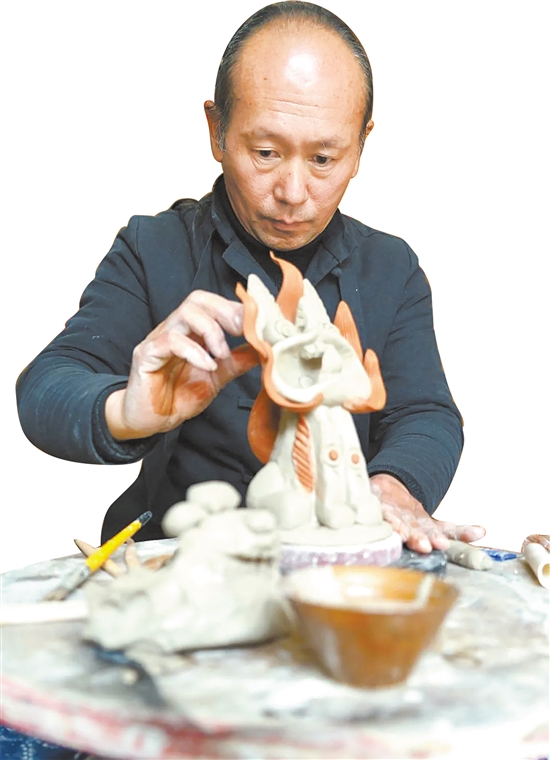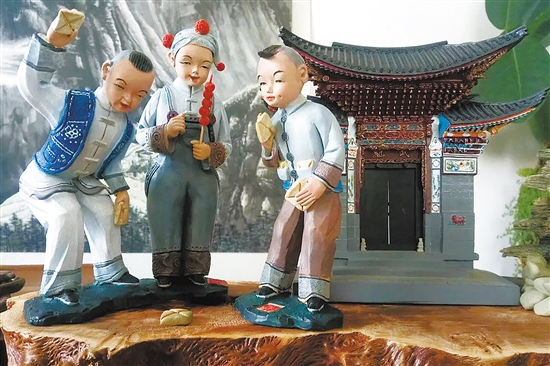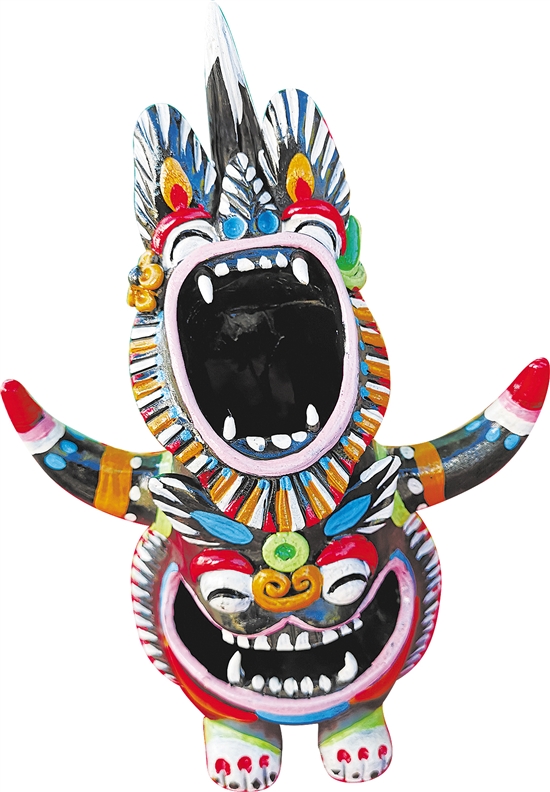Su Longxiang: I bring muds to life
A life-long romance with clay sculpture
Su Longxiang, a clay artist living in northwest Yunnan’s Dai Dai autonomous prefecture, has been known as “Claymaker Su” among local residents because of his life-long love for clay sculptures and excellent craftsmanship.
Su was born into a family of clay sculptors in Fengyi township, Dali. He has never received any formal art education, but he loves creating clay sculptures as he has been admiring his father’s exquisite and vivid clay figurines since childhood.

To Su, clay sculpture is not only a skill or profession, but a family heritage that has been passed down for years.
Su began learning the skills of clay sculpture with Xu Wenhu, a famed clay artist in Dali, at the age of 16. Xu’s works are primarily characterized by those well-presented details, especially when he comes to sculpt the clothes of a figurine.

After his apprenticeship, Su decided to go to Yongsheng, Lijiang city, on his own where he could focus on refining his sculpting skills without being disturbed by other unrelated matters.
“In Lijiang, my skills were improved. But what’s more important is that I, for the very first time, learned how to live along and be myself,” says Su Longxiang.
According to him, this experience has become a strong impetus that drives him to perfect his skills.
“Home town is my inspiration”
Su Longxiang’s clay sculptures are mainly inspired by the ethnic cultures of Dali —his hometown. “The unique culture of Bai people here has given me endless ideas,” explains him. “I’m quite interested in traditional rituals and festivals. And I also enjoy talking to different people out there. They have all inspired me in some way.”

Thank to Dali’s rich ethnic cultures and customs, Su completed as many as 23,000 pieces of artworks between 1994 and 2017, including the sculptures of various Bai individuals, houses as well as tile cats — traditional clay roof ridge beasts popular around Dali . And it is worth mentioning that the “Scroll of Tea Horse Road”, as one of Su’s most well-known art pieces, consists of more than 2,000 figurines. It’s not exaggerate to say that he has turned the ethnic culture of Bai people into a timeless masterpiece.
Su’s artworks are particularly characterized by their sophistication and vividness. In order to depict smiles and eyebrows of different figurines, he has observed the facial expressions of many people in real life. “I hope that every figurine that I make can give you a feeling that when you look at it, it looks at you, two,” he says.
A technique heritage
Over the past few years, Su has been keen on promoting Dali’s ethnic culture by showing his sculptures in various occasions and passing his skills down to the next generation.
He, for example, brings his works to local culture exhibitions every year. On the 2019 Creative Yunnan Culture Industries Expo, a pair of Bluetooth speakers he made which features tile cat —a mythical roof ridge beast of Yunnan —gained much popularity among young consumers.

In order to better inherit the skills of clay sculpture, Su has received more than 300 apprentices in total these years. Among them are young craftsmen, students of fine arts as well as enthusiasts in their 80s. “Every person has the chance to become the next clay sculpture master,” Su says with smile.
In the years of 2015 and 2016, Su was given two titles of intangible culture heritage heritor by the local government of Dali. Later in 2017, he opened his own studio in Fengyi, his hometown. And in 2018, he won the gold metal in a national clay sculpture contest.
Meanwhile, he has been selected as the chairman of Clay Sculpture Committee of the China Folk Culture Institute Research.

However, despite these titles, he himself still likes to be called “Claymaker Su” the most.
Today, “Claymaker Su” has become a trademark. It not merely shows his modesty, but also his understanding of craftmanship, that is to devote all his energy into his artworks.
“Clay sculpture is less about creating than bringing muds to life,” he concludes.
Writing by Qin Menglin; trans-editing by Zhang Shuyu and Wang Jingzhong; photographs by Zhang Hui, Li Xue and Li Wei